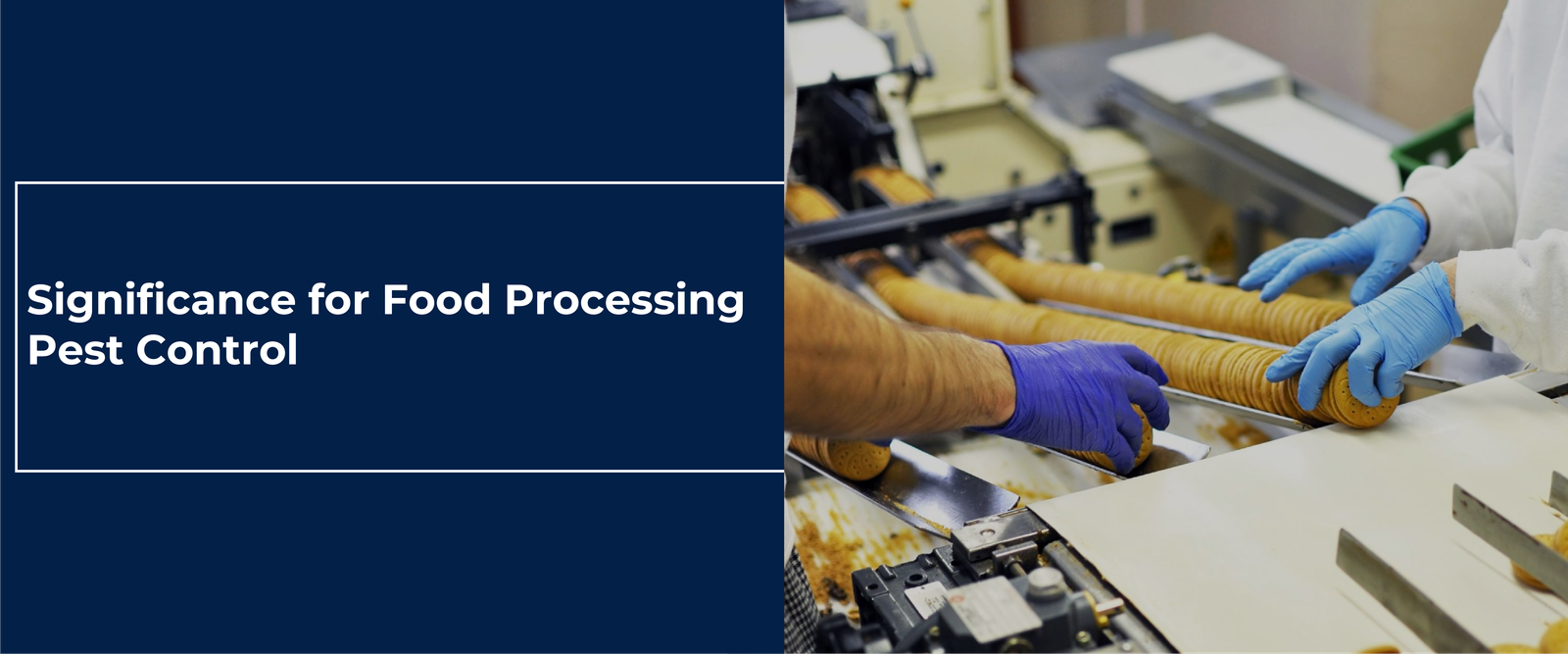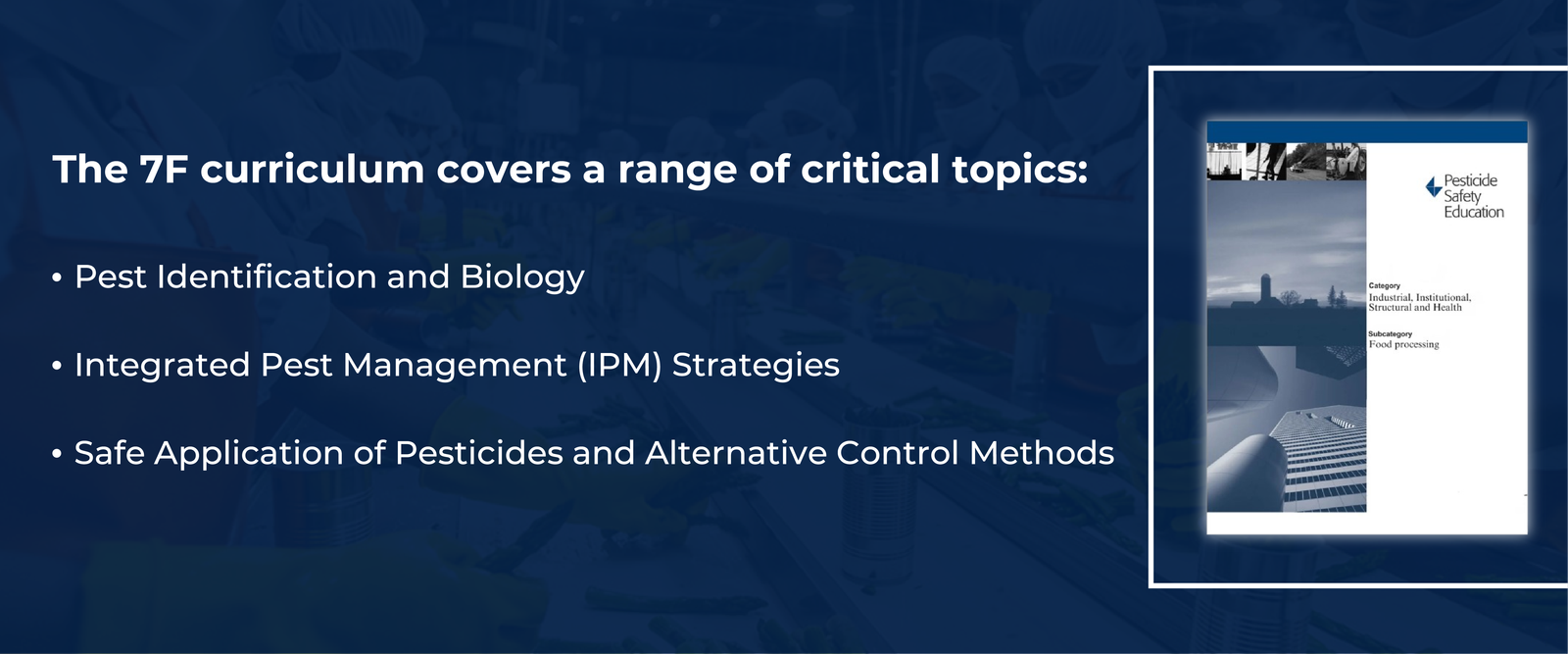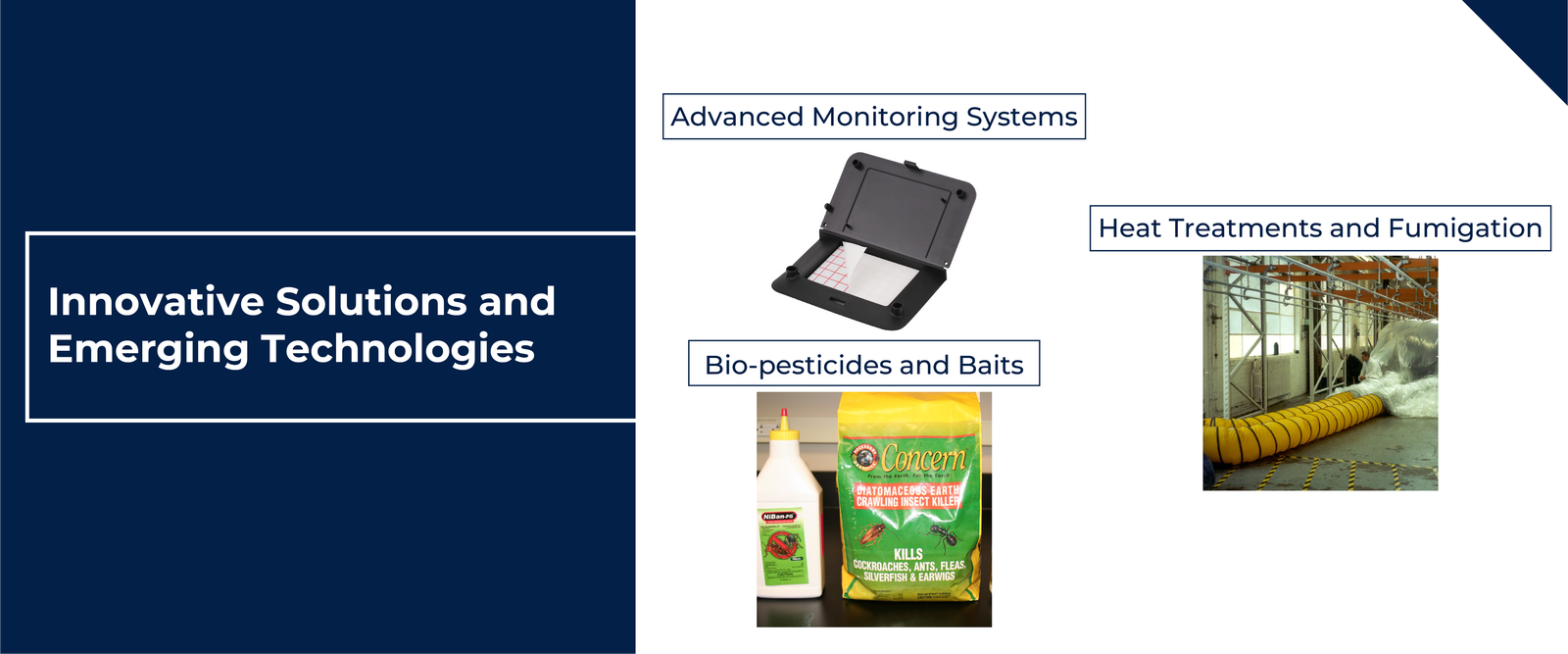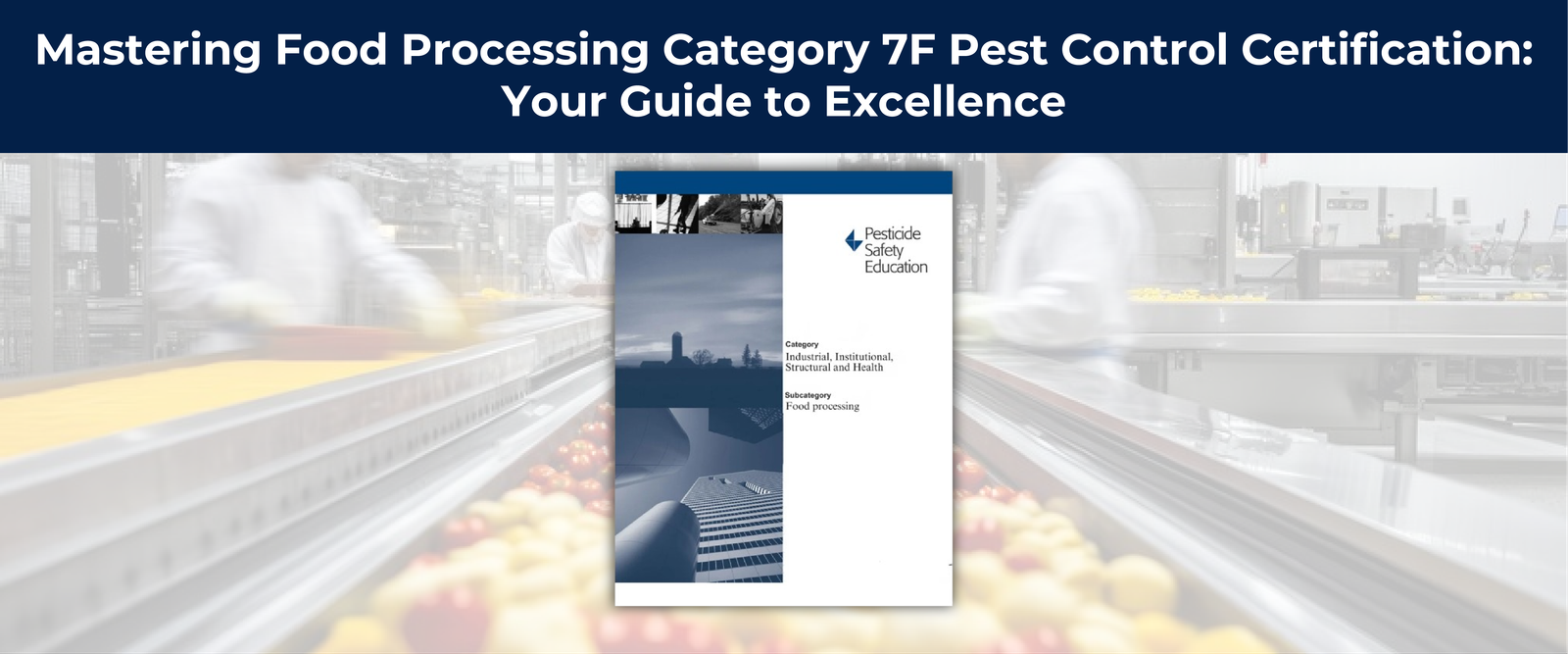Food Processing Pest Control (7F) Certification Guide
If you are working in food processing facilities in NYS , you must be a certified technician or Applicator in category 7F( food processing ). The first step to become a certified pest control technician , you must take 30 hour calls. This course will include core credits and category specific for 7F.
After the completion of 30 hour course, the candidate must take a test through the state. After passing the exam, New York State will certify the candidates as a pest control technician in category 7F. After completing one year of experience, the pest control technician will be eligible to upgrade his license to commercial pest control applicator in category 7F.
After becoming a commercial pest control applicator , the applicator again can add more sub categories required for different areas of pest control inside and outside of the structures.
If the candidate already has commercial pest control applicator certification in any other category. He is required to take a 12 hour certification credits in category 7F and an exam with New York State. After passing the exam, the candidate will become a certified applicator in that specific category. This exam will consist of 50 questions and the passing ratio is 35 out of 50.
Importance of Pest Control in Food Processing:
Food processing facilities are breeding grounds for unwanted guests – pests. From rodents and insects to birds and even microorganisms, these intruders can contaminate food products with harmful bacteria, allergens, and even physical debris. This not only compromises food safety but can also lead to product recalls and financial losses. Effective pest control becomes paramount to ensure the integrity and safety of our food.
Understanding Food Processing Category 7F Pest Control Certification:
The Food Processing Category 7F Pest Control Certification is a specialized credential designed for pest control professionals working in food processing environments. It equips them with the knowledge and skills necessary to implement safe and effective pest management strategies specific to these facilities.
Significance for Food Processing Pest Control:
Obtaining a Category 7F certification signifies a pest control professional’s expertise in:

-
- Identifying common food processing facility pests and their potential risks.
-
- Implementing Integrated Pest Management (IPM) programs tailored to food production environments.
-
- Understanding the safe and responsible use of pesticides around food products.
-
- Maintaining meticulous documentation and record-keeping practices.
-
- Prioritizing food safety and sanitation protocols during pest control activities.
The Critical Role of Pest Control in Food Processing
Common Pests in Food Processing Environments:
Food processing facilities offer a buffet for unwanted guests. Here are some of the most common pests you’ll encounter:
-
- Rodents: Mice and rats are notorious for carrying diseases and contaminating food with droppings and fur.
-
- Insects: From flies and beetles to cockroaches and moths, these pests can transmit bacteria, damage packaging, and directly infest food products.
-
- Birds: Birds can introduce harmful pathogens through droppings, feathers, and nesting materials.
-
- Stored product pests: Grain weevils, flour beetles, and other insects specifically target stored grains, cereals, and other dry food products.
Impact of Pests on Food Safety, Quality, and Regulatory Compliance:
The presence of pests in a food processing facility can have devastating consequences:

-
- Foodborne Illness: Pests can spread harmful bacteria like Salmonella and E. coli, leading to foodborne illnesses that can be serious or even deadly.
-
- Product Contamination: Contaminated food not only poses a health risk but also damages product quality and leads to recalls.
-
- Regulatory Non-Compliance: Failure to maintain proper pest control measures can result in hefty fines and even facility closures from regulatory bodies.
Legal and Health Implications of Pest Infestations:
Beyond the immediate impact on food safety and product quality, pest infestations can have significant legal and health ramifications:
-
- Lawsuits: Consumers who become sick from contaminated food can file lawsuits against the processing facility.
-
- Damage to Reputation: Public knowledge of a pest infestation can severely damage the company’s reputation and consumer trust.
-
- Public Health Risks: Widespread outbreaks of foodborne illness can pose a significant public health threat.
Key Components of the 7F Certification
The 7F Certification equips pest control professionals with the specialized knowledge and skills needed to navigate the unique challenges of food processing facilities.
Core Subjects and Curriculum Details:
The 7F curriculum covers a range of critical topics:

-
- Pest Identification and Biology: Understanding the biology and behavior of common food processing pests allows for targeted and effective control strategies.
-
- Integrated Pest Management (IPM) Strategies: IPM focuses on prevention, monitoring, and using a combination of methods, minimizing reliance on pesticides.
-
- Safe Application of Pesticides and Alternative Control Methods: Learning the proper handling, storage, and application of pesticides to ensure food safety and minimize environmental impact. It also covers alternative methods like traps, baits, and physical exclusion techniques.
Examination and Certification Process:
The 7F certification typically involves passing a written exam that tests your knowledge of the covered subjects. Specific details on the exam format and study resources may vary depending on the certifying organization.
By successfully completing the 7F Certification, you demonstrate your expertise in safeguarding our food supply and protecting public health. Stay tuned for the next part of this series, where we’ll explore the benefits of obtaining a 7F certification and career opportunities it unlocks.
Best Practices for Pest Control in Food Processing Facilities
Importance of Regular Inspections and Monitoring:
The foundation of any successful pest control program lies in vigilance. Here’s how:
-
- Routine Inspections: Conduct regular inspections of the facility to identify potential entry points, harborage areas, and signs of pest activity (droppings, gnaw marks, etc.).
-
- Monitoring Programs: Utilize traps and monitors to track pest populations and identify specific pest species for targeted control strategies.
Effective Sanitation and Maintenance Strategies:
Creating a pest-unfriendly environment is key to prevention:

-
- Sanitation: Maintain a clean and sanitized facility by promptly removing food debris, spills, and garbage.
-
- Maintenance: Seal cracks, repair damaged equipment, and eliminate potential harborage areas for pests.
-
- Waste Management: Implement a proper waste disposal system with tightly sealed bins and regular emptying schedules.
Implementation of Integrated Pest Management (IPM) Techniques:
IPM is a comprehensive approach that goes beyond just applying pesticides:
-
- Prevention: Focus on preventing pest entry and creating a hostile environment through sanitation and maintenance.
-
- Monitoring: Continuously monitor for pest activity to identify and address infestations early on.
-
- Mechanical Control: Utilize traps, exclusion barriers, and other non-chemical methods to control pest populations.
-
- Biological Control: Introduce natural predators or beneficial organisms to control specific pests organically.
-
- Judicious Pesticide Use: Only use pesticides as a last resort, following strict protocols for safe application and minimizing environmental impact.
Documentation and Record-Keeping Best Practices:
Maintaining meticulous records is crucial for demonstrating compliance and ensuring program effectiveness:
-
- Detailed Records: Document inspection findings, pest activity, control measures taken, and the types and quantities of pesticides used.
-
- Regular Reporting: Prepare reports summarizing inspection results and control activities for internal review and regulatory compliance.
Addressing Challenges in Food Processing Pest Control
Common Challenges Faced in Food Processing Pest Management:
Despite best efforts, pest control in food processing facilities presents unique challenges:
-
- Complex Environments: Food processing facilities often have diverse areas with varying moisture levels and food sources, attracting various pests.
-
- Production Constraints: Maintaining pest control measures without disrupting production schedules can be a balancing act.
-
- Evolving Pest Species: Pests can develop resistance to traditional control methods, necessitating ongoing adaptation and innovation.
Innovative Solutions and Emerging Technologies:
The industry is constantly evolving to combat these challenges:

-
- Advanced Monitoring Systems: Electronic monitoring tools provide real-time data on pest activity for faster response times.
-
- Bio-pesticides and Baits: Targeted use of low-risk pesticides and species-specific baits minimizes environmental impact and ensures food safety.
-
- Heat Treatments and Fumigation: In severe cases, heat treatments or controlled fumigation can effectively eliminate infestations.
Continuous Education and Professional Development
The fight against pests is an ongoing battle. New technologies, regulations, and even pest behavior patterns emerge constantly. To stay ahead of the curve, continuous education and professional development are essential for any pest control professional, especially those working in food processing facilities.
Opportunities for Advanced Certifications and Specializations:
Earning your 7F certification is a great first step. Consider pursuing advanced certifications or specializations to further enhance your expertise:
-
- Food Safety Certifications: Certifications focused on food safety protocols can demonstrate your commitment to a holistic approach.
-
- Specific Pest Certifications: Develop in-depth knowledge of specific pest groups like rodents or stored product insects.
Conclusion
Summary of the Benefits of Obtaining the Food Processing Category 7F Pest Control Certification:
-
- Expertise in Food Safety: Demonstrates a deep understanding of pest risks and control strategies specific to food processing environments.
-
- Enhanced Career Opportunities: Positions you for higher-level pest control jobs within the food processing industry.
-
- Compliance with Regulations: Ensures you meet the regulatory requirements set by various governing bodies.
-
- Increased Credibility and Client Trust: Clients are more likely to trust a professional with specialized expertise in food safety.
Earning your 7F certification is an investment in your career and the safety of our food supply. It signifies your commitment to excellence and positions you as a valuable asset in the vital field of food processing pest control.
Ready to take your pest control career to the next level?
Enroll in the Food Processing Category 7F Pest Control Certification program at NYC Pest Management School! We offer comprehensive training programs designed to equip you with the knowledge and skills necessary to excel in this specialized field.

